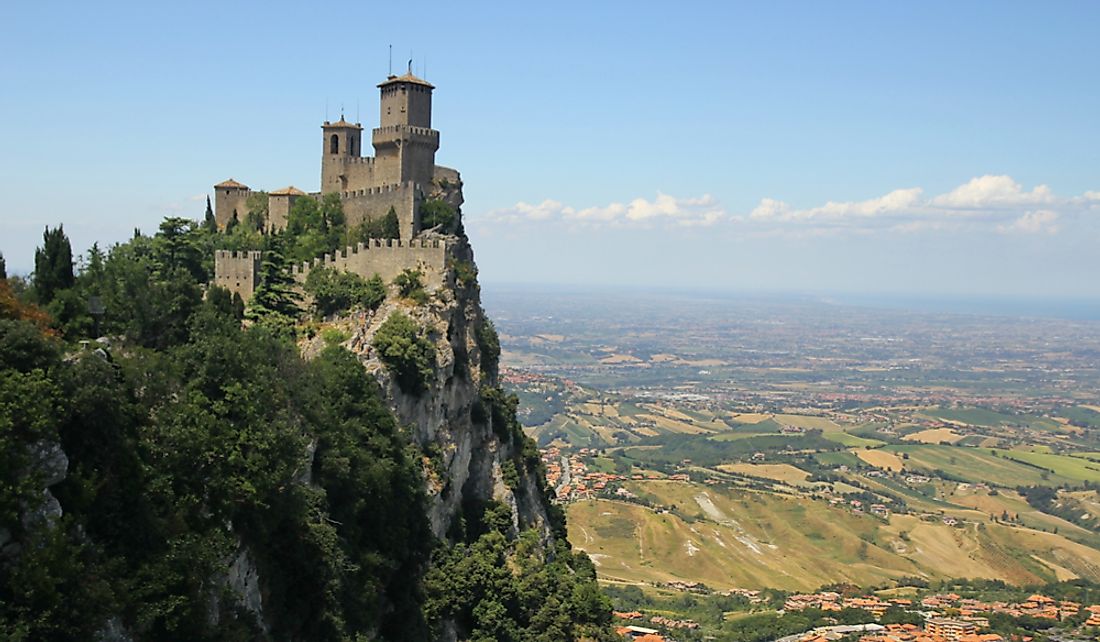What Are The Major Natural Resources Of San Marino?

San Marino is a small country located on the Adriatic side of Italy on the slopes of Mount Titano. The country is sandwiched between the Marche and Emilia-Romagna regions and is surrounded by Italy. It is the third smallest country in Europe after the Vatican City and Monaco and the fifth smallest in the world. The country's relief mainly comprises of the limestone of Mount Titano with hills to the southwest of the Mountain and slopes on the northeastern part that gradually descends towards the Adriatic Sea and Romagna Plain. The nation is dived into nine municipalities that are locally referred to as "Castelli." The municipalities include San Marino, Borgo Maggiore, Faetano, Serravalle, Acquaviva, Chiesanuova, Montegiardino, and Fiorentino. San Marino has high standards of living with the government offering various benefits for the inhabitants. Some of the natural resources found in the country include limestone, arable land, and beautiful landscape. The country mainly exports stone, leather, lime, ceramics, wheat, chestnuts and wine.
San Marino's Natural Resources
Limestone
For centuries the nation was dependent on quarrying, a practice the nation inherited from its founder and patron Saint Marinus who was a mason. The craft has, however, declined in significance in recent years due to depletion of limestone and emergence of more competitive economic activities. The country is still known for its high-quality limestone, tumbled finish pavers, and tiles which are ideal for exterior and interior applications.
Landscape
The state of San Marino is described as a serene republic mainly due to the captivating mountainous relief and the view from the Three Towers of San Marino. In addition to the mountainous landscape, the country is also home to a unique cave grotto system. The country which is home to an estimated 30,000 inhabitants welcomes over 2 million tourists a year who flock to view and experience the nation's beauty. Adventurous tourists have the opportunity to experience what the nation has to offer in activities such as hiking. Revenue generated from tourism is vital to the nation's economy.
Arable Land
About 17% of the nation’s land is arable, and some of the agricultural products produced from the land include grapes, wheat, corn, olives, cattle, and pigs. The main exports from the agricultural sector include wine and cheese. Forests also cover a significant part of the land.
The Economy of San Marino
The nation’s economy is highly diversified and depends on banking, industry, and manufacturing. The banking sector alone accounts for about a fifth of the nation's revenues. The banking sector's phenomenal growth has been as a result of the nations low corporate tax incentives and favorable interest earnings. Earnings from the banking sector increased significantly after that nation was removed from the blacklist of tax havens. A rise in non-performing loans is, however, threatening returns from the sector. Other hurdles include an estimated 500 to 600 million Euros in the capital that is needed by local banks and up to 2 billion Euros in bad assets that burden the sector.











